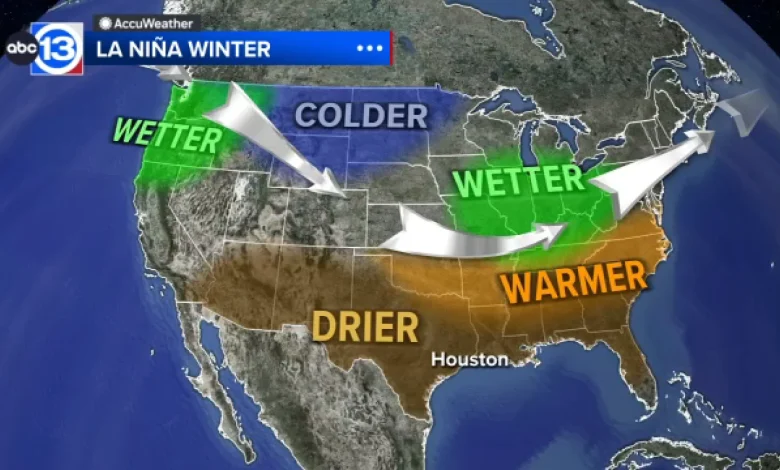Houston’s temperature rollercoaster this week sees wintry mornings and sunny afternoons

HOUSTON, Texas (KTRK) — From wintry mornings to warm and sunny afternoons, Houston has been on a temperature rollercoaster this week.
It’s a good sign, ABC13 Meteorologist Elyse Smith says, because that means the normal seasonal transition from the warmer to cooler months is taking shape. But is this early cold snap a signal to even colder weather ahead this winter?
Let’s start at the beginning. With the current La Niña expected to last through at least February, the usual pattern that accompanies it means Southeast Texas would favor a warmer and drier winter. That doesn’t mean there won’t be some big cool downs or hotter days, not to mention stormy patterns too. But overall, the way the jet stream sets in across the country during a La Niña favors that pattern overall.
There are several other teleconnection patterns that can also influence the weather across the country.
One that’s recently responsible for the stormy pattern in the Pacific Northwest, and what helped to bring the recent arctic blast, is in the North Pacific. Scientists refer to it as “The Blob,” a large area of warmer-than-normal sea surface temperatures that has lingered in the North Pacific for weeks. It’s also led to a marine heat wave, impacting marine life locally. From a weather perspective, “The Blob” can also influence the jet stream over the Northern Pacific and how it enters the country. So while a La Niña is more of a seasonal driver, different influences like “The Blob” and the cold air over Siberia can also have more week-to-week impacts.
As for these cold snaps, they really are becoming just that. A short amount of time when temperatures drop to very cold readings and then rebound very quickly. ABC13’s partners at Climate Central found that these cold snaps and streaks are getting shorter as the climate warms. For Houston, their study found that the city’s cold streaks are about three days shorter than they were decades ago. And elsewhere across the country, some cities like St. Louis, Philadelphia, and Las Vegas are seeing their cold snaps decrease by 10 to 20 days. That’s one thing to keep in mind with La Niña winters, as they historically have favored a cold air outbreak or two during the winter.
For more on this story, follow Elyse Smith on Facebook, X and Instagram.
Copyright © 2025 KTRK-TV. All Rights Reserved.





